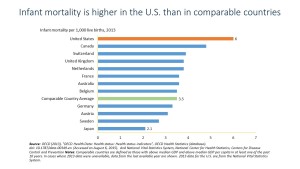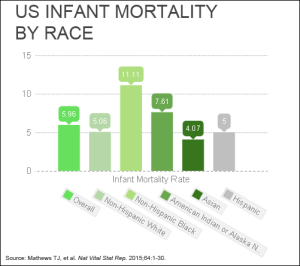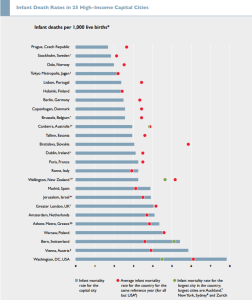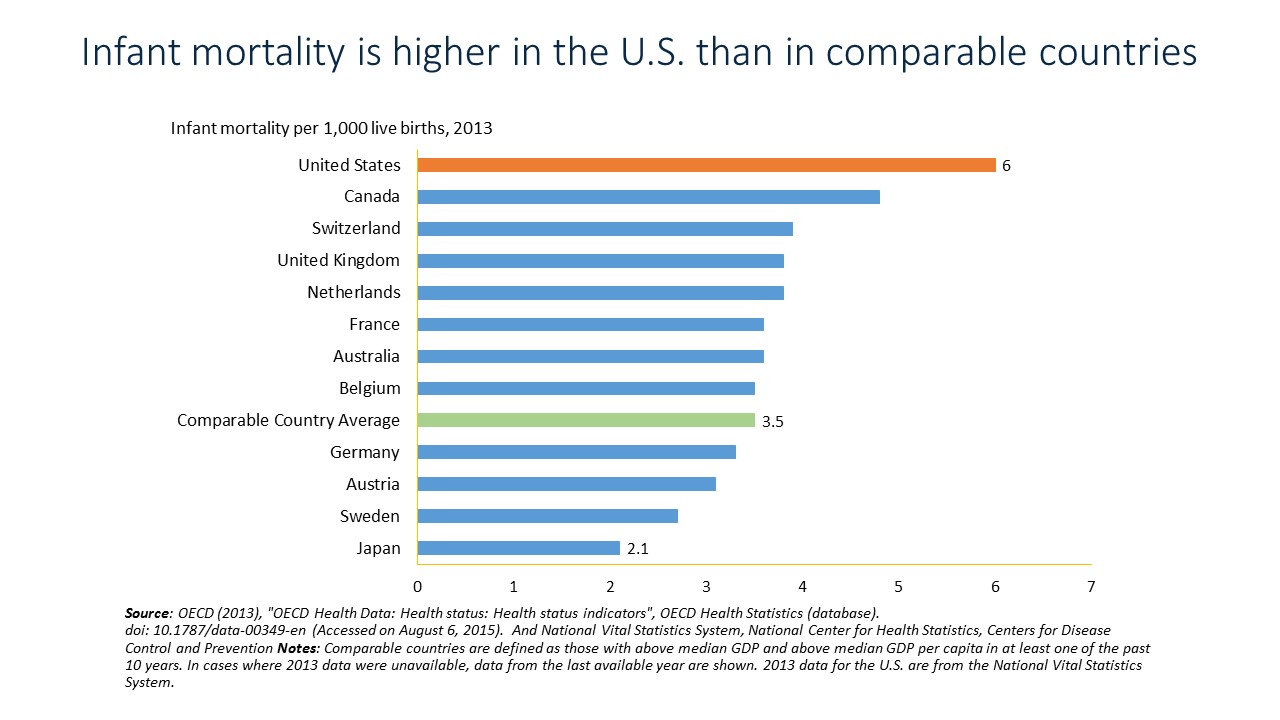 The rate of infant mortality — that is, babies dying in their first year of life — in the United States ranks lowest among the world’s developed countries, and below some less wealthy nations, as well.
The rate of infant mortality — that is, babies dying in their first year of life — in the United States ranks lowest among the world’s developed countries, and below some less wealthy nations, as well.
Shiny new things for digital health will be launching at the 2016 CES, the Consumer Electronics Show, in Las Vegas this week. And in the midst of virtual reality devices, connected cars, drones, and 4K TVs, I’ll be moderating a panel to kick off the Digital Health Summit at CES on Thursday focusing on The Wizards of Maternal Health — and how digital + analog can bolster outcomes for America’s and other countries’ children and mothers.
 The statistics are stunning:
The statistics are stunning:
- Six in every 1,000 babies born in the U.S. died at birth or in the first year of life in 2013, triple the rate of Japan or Norway, double the rate of Ireland, Israel and Italy
- The overall U.S. infant mortality rate is about 42% higher than the comparable country average
- While there have been declines in infant mortality in every country, the rate of decline in the U.S. has been slower than in other nations
- While the Black population has seen the most improvement in neonatal mortality between 2000 and 2013, the Non-Hispanic Black segment has a dramatically greater infant mortality rate than Non-Hispanic Whites and the overall population — at over two-times the rate of the former, and nearly twice the overall IM rate for the overall population in America.
 Note that Washington DC, the nation’s capital, also has a much higher infant mortality rate than 34 other capital cities around the world, shown in the third graph. Babies born in Prague; Tallinn, Estonia; Bratislava, Slovakia; and Warsaw, all have a better chance of survival than children born in the U.S. capital.
Note that Washington DC, the nation’s capital, also has a much higher infant mortality rate than 34 other capital cities around the world, shown in the third graph. Babies born in Prague; Tallinn, Estonia; Bratislava, Slovakia; and Warsaw, all have a better chance of survival than children born in the U.S. capital.
Some key points to note about this session:
- There are no people representing companies that develop healthcare “things” featured on this panel
- There will be a NASA scientist, a doula, a successful real estate and hospitality developer, and a former U.S. Congressman (The Honorable Rep. Richard Gephardt, D-Mo.).
In our session, we’ll talk with folks working with SquareRoots, an organization focusing on maternal and child health, about nutrition and food; mental health, emotional support and the role of the doula; women’s access to healthcare services; and, indeed, the role of Big Data and digital health tools for bolstering the health of mothers and their children.
Health Populi’s Hot Points: Texting for health, analyzing Big Data sets in communities, addressing health disparities in terms of providing underserved populations with needed healthcare services and technologies can all help to address the infant mortality tragedy in America. But it’s a multifaceted, multi-tasking challenge, requiring more than digital and communications technologies. Public policies – health, and beyond health including communications access (THINK: broadband connectivity as a social determinant of health), food legislation, access to good education, safe neighborhoods, and mental health parity – all contribute to positive maternal health.
If you’re attending CES and kicking the tires on digital health technologies, ask yourself The Big Question: whose health will the product or service address? Can the product impact individuals whose health could be improved with its use? If not, why not – what are the barriers to getting a good health/care idea to underserved people?
I’m gratified to be part of this panel, which will indeed frame these Big Questions, at the start of the Digital Health Summit. Please follow our tweets at #CES2016 and #DigitalHealthCES to stay in our conversation.





 I'm in amazing company here with other #digitalhealth innovators, thinkers and doers. Thank you to Cristian Cortez Fernandez and Zallud for this recognition; I'm grateful.
I'm in amazing company here with other #digitalhealth innovators, thinkers and doers. Thank you to Cristian Cortez Fernandez and Zallud for this recognition; I'm grateful. Jane was named as a member of the AHIP 2024 Advisory Board, joining some valued colleagues to prepare for the challenges and opportunities facing health plans, systems, and other industry stakeholders.
Jane was named as a member of the AHIP 2024 Advisory Board, joining some valued colleagues to prepare for the challenges and opportunities facing health plans, systems, and other industry stakeholders.  Join Jane at AHIP's annual meeting in Las Vegas: I'll be speaking, moderating a panel, and providing thought leadership on health consumers and bolstering equity, empowerment, and self-care.
Join Jane at AHIP's annual meeting in Las Vegas: I'll be speaking, moderating a panel, and providing thought leadership on health consumers and bolstering equity, empowerment, and self-care.